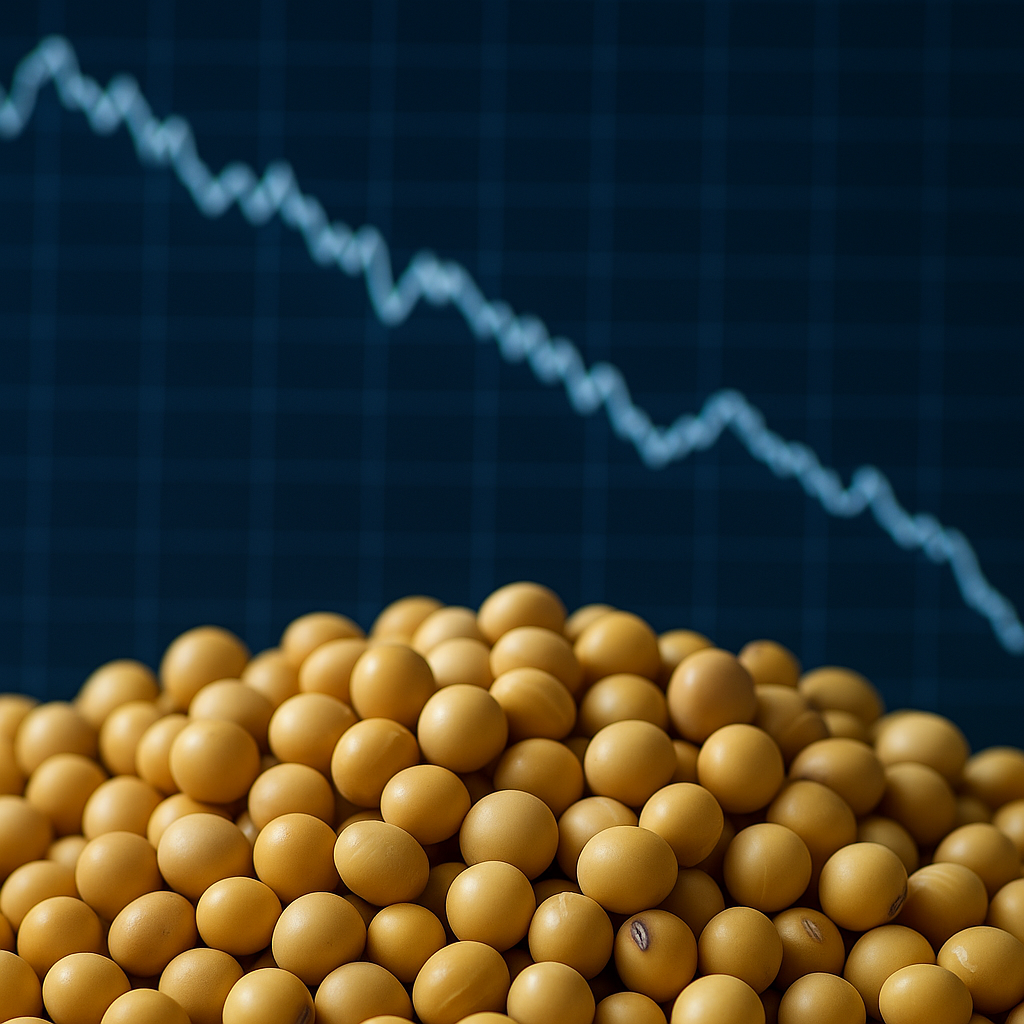Few groups are more deeply entwined with American politics than farmers. From farm bills to tariff wars, subsidies to ethanol mandates, Washington has consistently had its hand on the tiller of rural America. For many growers, politics has been both a lifeline and a chokehold — providing crucial supports in bad years, while at other times steering policy decisions that cut into profits or markets.
Today, with soybean farmers warning of a financial collapse reminiscent of the 1980s, it is worth tracing the political arc of farm policy from the mid-20th century to the present.
1950s–1960s: Price Supports and Surpluses
Postwar U.S. agriculture entered the 1950s with government guarantees. Farm programs established during the New Deal carried over, offering price supports, supply management, and surplus purchases. Farmers could count on Washington to stabilize markets, even as mechanization and chemical inputs accelerated yields.
Politics also opened overseas markets. The Food for Peace program (PL-480) sent U.S. grain abroad, doubling as foreign aid and an outlet for American surpluses. Critics called it “agricultural diplomacy,” but it ensured steady demand and helped establish the U.S. as the world’s breadbasket.
1970s: “Get Big or Get Out”
The Nixon administration, through Agriculture Secretary Earl Butz, reoriented farm policy. Butz encouraged farmers to plant “fencerow to fencerow,” ending strict supply controls. The logic: expand exports, especially to the Soviet Union and Asia.
This political shift fueled short-term prosperity but also volatility. By the late 1970s, soaring land values and debt loads set the stage for the farm crisis to come.
1980s: Crisis and Rescue
High interest rates, collapsing exports after the Soviet grain embargo, and falling land values created a perfect storm. Thousands of farmers went bankrupt. Tractor-cade protests descended on Washington, demanding relief.
Politics responded slowly. By mid-decade, Congress passed debt restructuring programs, and the 1985 Farm Bill expanded conservation incentives. But scars remained. Many family farms were lost, and consolidation accelerated. For rural America, the crisis was not just economic but cultural.
1990s–2000s: Free Trade and Globalization
The North American Free Trade Agreement (NAFTA) in 1994 and the Uruguay Round of the GATT (leading to the World Trade Organization) redefined global farm commerce. U.S. farmers gained access to new markets, but they also faced intensified competition.
Congress responded with “Freedom to Farm” (1996), phasing out supply management. The idea was that global markets, not Washington, would stabilize income. But when prices crashed in the late 1990s, “emergency payments” returned, highlighting farmers’ continued dependence on politics.
The 2000s brought another political pivot: biofuels. Ethanol and biodiesel mandates created a new demand pillar for corn and soybeans. This policy-driven market has remained crucial, especially today as renewable diesel consumes record shares of soybean oil.
2010s: Trade Wars and Bailouts
Farmers enjoyed high prices in the early 2010s, fueled by Chinese demand and biofuels. But politics disrupted again. The 2018–2019 U.S.–China trade war led Beijing to slap retaliatory tariffs on soybeans, devastating exports.
Washington stepped in with the Market Facilitation Program (MFP), funneling billions in direct aid to offset losses. Many farmers welcomed the checks, but critics argued it was “socialism for farmers,” inconsistent with free-market ideals often championed in rural communities.
2020s: Tariffs, Biofuels, and New Uncertainty
Today’s farm economy reflects layers of past political choices:
Tariffs remain a drag, keeping U.S. soybeans at a price disadvantage in China. Biofuel mandates are the strongest demand support, with renewable diesel now consuming more than half of U.S. soybean oil. Farm bills continue to provide crop insurance subsidies, conservation payments, and safety nets that keep many farms afloat.
At the same time, new pressures — climate policy, land ownership debates, and global competition — mean farmers are as exposed to politics as ever.
Help and Hurt: The Double-Edged Sword of Policy
Politics has helped U.S. farmers survive downturns:
Price supports and surpluses in the 1950s–60s. Debt restructuring in the 1980s crisis. Biofuel demand creation in the 2000s. Trade-war bailouts in the 2010s.
But politics has also hurt farmers:
The Soviet grain embargo in 1980 that triggered a price collapse. Deregulation pushes that encouraged overproduction without safety nets. Trade wars that closed off critical markets. Subsidies that inflate land values and rents, making it harder for young farmers to enter.
Looking Ahead
As farmers gather today in places like Brooklyn, Arkansas, warning of financial collapse, history suggests politics will again decide their fate. The question is whether policymakers will open markets, expand biofuel support, or write new bailout checks — and whether those choices will provide lasting stability or only temporary relief.
For farmers, one thing remains unchanged since 1950: Washington may be distant, but its policies are felt in every acre planted and every bushel sold.

